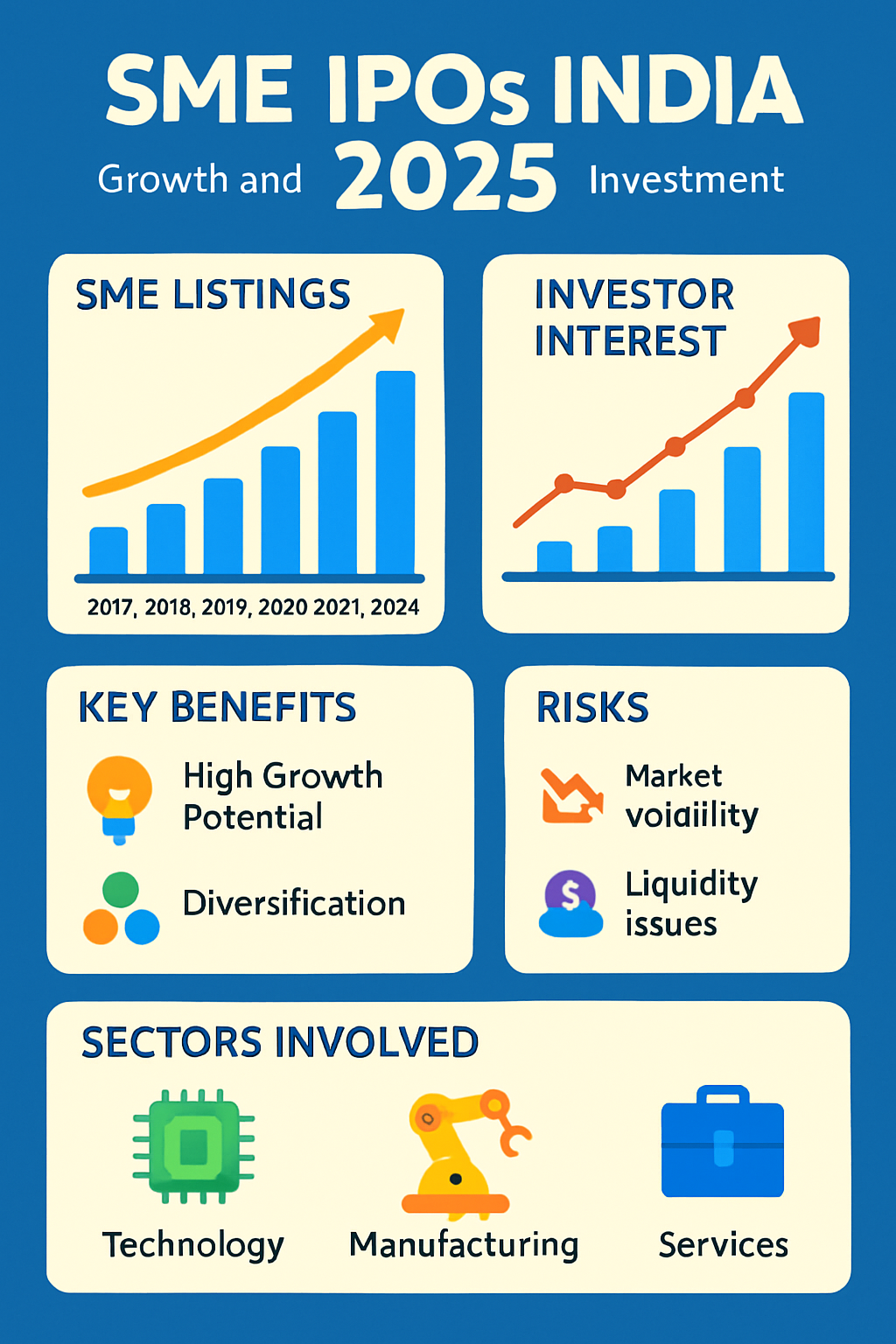Introduction
The Indian SME (Small and Medium Enterprises) sector is
rapidly gaining momentum in the capital markets in 2025. With increasing
government support, investor interest, and regulatory facilitation, SMEs are
tapping the IPO route to access growth capital and drive expansion. This blog
unpacks the burgeoning SME IPO landscape, highlighting why these offerings are
becoming attractive investment opportunities and how they could reshape India’s
stock market in the near future.
What Are SME IPOs?
SME IPOs are initial public offerings by companies
categorized as small and medium enterprises based on capital, turnover, and
workforce criteria defined by the Indian government. These IPOs are listed on
dedicated SME platforms of stock exchanges like NSE Emerge and BSE SME,
providing SMEs with a capital-raising avenue without the stringent requirements
of the mainboard.
Why Are SME IPOs Important in 2025?
- Boost
to India's Economy: SMEs contribute over 30% to India’s GDP and employ
millions. Listing facilitates their access to funds for technology
upgrades, expansion, and global competitiveness.
- Investment
Diversification: SME IPOs offer retail and institutional investors
diversified exposure beyond large-cap stocks, often at attractive
valuations.
- Government
& Regulator Push: Initiatives like reduced listing fees, eased
compliance, and focused SME growth funds enhance market access for SMEs.
Key Trends Driving SME IPO Growth
- Increase
in Number of Listings: 2025 has seen a significant rise in SME IPOs, with
many companies from manufacturing, IT, and consumer sectors opting for
listing to fuel their growth trajectories.
- High
Oversubscription Rates: Many SME IPOs have been oversubscribed multiple
times, signaling strong investor appetite and trust in these smaller
companies’ growth stories.
- Technology
Adoption: SMEs leveraging technology and digital transformation to improve
operational efficiency are more appealing to investors.
Benefits of Investing in SME IPOs
- Potential
for High Returns: Smaller companies often have higher growth potential,
yielding significant post-listing gains for early investors.
- Lower
Entry Barriers: SME IPOs usually come at lower price points, allowing
retail investors to diversify their portfolio more affordably.
- Regulatory
Safeguards: While riskier than large-cap stocks, SME IPOs are subject to
regulatory norms ensuring minimum standards of transparency and
disclosure.
Risks to Consider
- Volatility
and Liquidity Issues: SMEs are relatively less liquid and may show price
swings post-listing.
- Business
Risk: Smaller companies might face operational and market challenges that
affect earnings unpredictably.
- Market
Awareness: SMEs are lesser-known entities requiring investors to do deeper
due diligence.
How to Choose the Right SME IPO?
- Examine
the company’s financial health, growth trajectory, and market position.
- Review
the prospectus carefully for risks, promoter credentials, and business
model sustainability.
- Analyse
the sector potential—focus on SMEs in expanding or tech-enabled sectors.
- Consider
past IPO performance or industry benchmarks to set realistic expectations.
Conclusion
SME IPOs in India 2025 represent a promising frontier for
investors seeking growth beyond traditional large-cap stocks. With the right
research and risk management, investors can benefit from the dynamism and
innovation that smaller enterprises bring to the stock market. As this segment
evolves with supportive policies and increasing market participation, unlocking
SME potential will be key to India’s long-term economic and investment growth.
Disclaimer: This blog is for informational purposes
only and does not constitute investment advice. Conduct thorough research
before investing.



